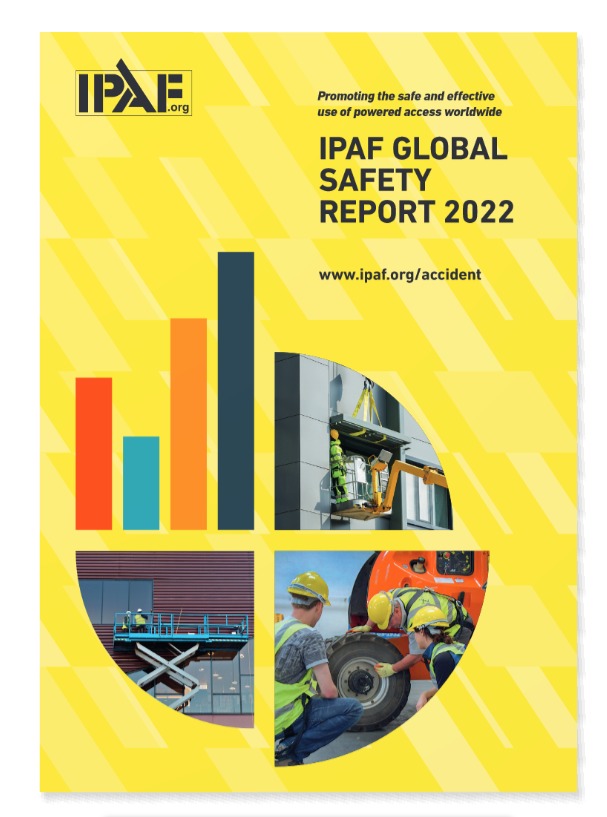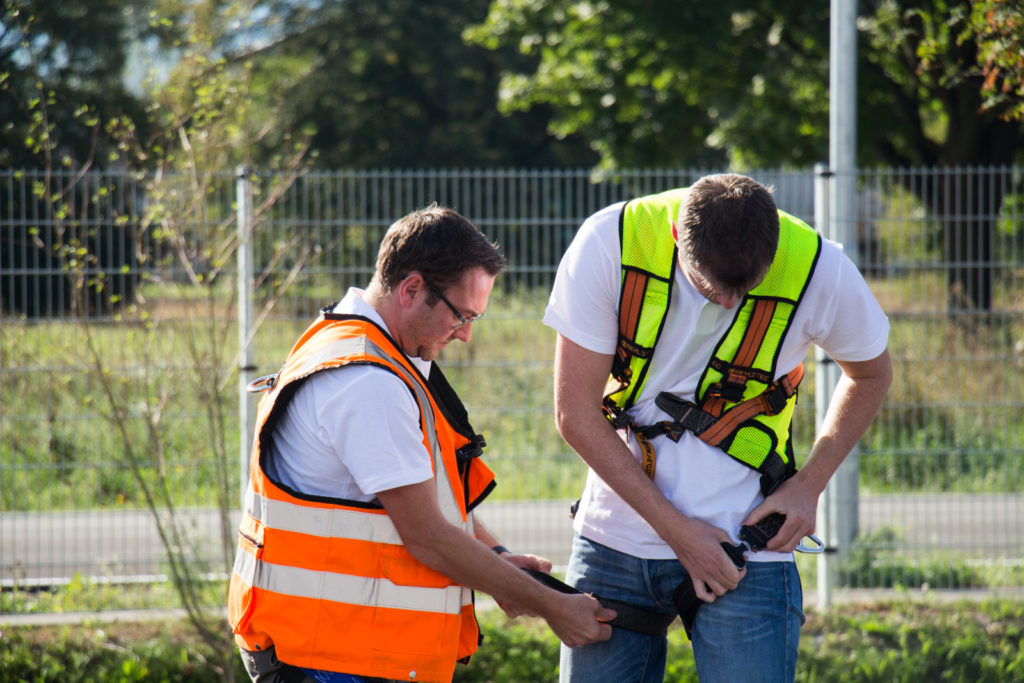Since IPAF began analyzing accident data in 2012, falls from the platform have been the most common cause of injury and death when using mobile elevating work platforms (MEWPs). From 2012 to 2022, there were 239 reports of falls from the platform in 20 countries, resulting in 132 deaths.
For the safe use of any aerial work platform, it is necessary to respect the conditions defined in the instruction manual, based on the rules of prevention: wind speed, resistance and level of the ground, risk of being hit by a vehicle, of hitting a fixed structure with the aerial work platform or ejection of the driver from the cabin.

To reduce the risk of falling from the platform, always:

The IPAF Global Safety Report 2022, covering 2012 – 2021 data, analyses the main causes of serious injuries and fatalities occurring when using powered access machines to conduct temporary work at height, highlighting the need to gather more near-miss data from across the industry worldwide to help avoid the most common types of serious accident in future. Consult the full report
Plan thoroughly
Conduct a proper MEWP site survey/risk assessment, select the correct machine for the work and use trained operators, supervisors and managers.
Know your machine
Operators should be trained on the machine type they are using and familiarized on the specific model. Operators should assess if the machine is suitable for the task and conditions, and adequate in terms of reach, articulation and load-bearing capacity. Machine knowledge includes whether personal fall protection equipment (PFPE or PPE) should be used and, if so, what type, and how to attach it.
Clip On!
If PFPE (or PPE) is required, all occupants of the platform must attach their harness to the correct anchor point. Ensure occupants’ movement within the platform is possible while their harnesses are attached, and do not move the machine or elevate the platform until, and unless, all occupants’ harnesses are attached.
Set-up and drive the machine/platform effectively
Occupants should never need to overreach, unfasten PFPE, step on or climb on guardrails, or otherwise extend the safe working envelope of the platform. Ensure vertical type MEWPs are well-positioned and repositioned as necessary throughout the job, to allow easy access to the area of work to be undertaken.
Stay inside the platform with harness(s) attached
The guardrails of the platform are the primary fall prevention method and define the operational envelope of the machine being used. Stay inside the platform at all times. Where there is a requirement for PFPE, occupants must wear it. Do not exit the platform at height; unclip/exit only on completion of work when the machine is safely lowered to the ground.
Topics that might be taught to your team for safe use of an aerial work platform?


- Get to know the work environment to prevent any risk of impact (obstacles, buildings, other vehicles). The strength and level of the floor must also be tested.
- Use the tools provided, like machine familiarization, risk assessments and manuals to help keep you safe
- Respect the load chart of the machine. Avoid overloading the basket with bulky materials that could increase the risk of falling.
- Users must remain inside the basket of the aerial platform, and must never climb over the guardrails, even to reach a target a few centimeters away…
The operators must be attached to the anchor points of the basket and (in some countries) wear a helmet with chinstrap from the moment they get into the basket and before any attempt to maneuver the machine…
In short, the risk of ejection from the basket is always a risk. The proximity to the ground should not lead operators to take greater risks as a fall from any height can still cause numerous traumas and even fatal accidents.
Depending on the country and the regulations in force, varying provisions may apply.
In summary:
The risk of falling is present at any time and increases as soon as a position at height is adopted, the activity is undertaken near a difference in level, or from any equipment for lifting people or material. 4 simple advice to avoid any risk of accident by fall:
- Stay in protected areas, marked out passage areas
- Use equipment for working at height that is adapted to your needs and constraints
- Check the equipment and scrupulously respect the safety instructions (of the work site, the equipment, and all laws and regulations in force)
- Make sure that the people using the work site or elevation equipment are properly qualified to use it.
Exemple of a terrible incident with an operator that isn't wearing a harness and not attached to an anchor point
Source of this article:
Article: évitez les chutes! – IPAF – https://www.ipaf.org/fr/resource-library/evitez-les-chutes
Prevention des risques de chute – Blog Access Industrie – https://blog.acces-industrie.com/securite/nacelle-elevatrice-prevention-des-risques-de-chute/